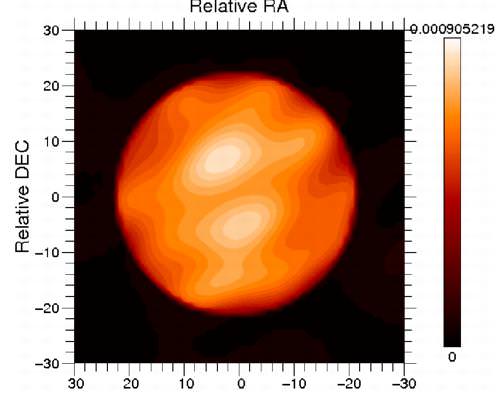Picture embedded below.

"Caption:The surface of Betelgeuse in near infrared at 1.64 micron in wavelength, obtained with the IOTA interferometer (Arizona). The image has been re-constructed with two different algorithms, which yield the same details, of 9 milliarcseconds (mas). The star diameter is about 45 milliarcseconds. Credit: Copyright 2010 Haubois / Perrin (LESIA, Observatoire de Paris)
An international team of astronomers has obtained an unprecedented image of the surface of the red supergiant Betelgeuse, in the constellation Orion. The image reveals the presence of two giant bright spots, which cover a large fraction of the surface. Their size is equivalent to the Earth-Sun distance. This observation provides the first strong and direct indication of the presence of the convection phenomenon, transport of heat by moving matter, in a star other than the Sun. This result provides a better understanding of the structure and evolution of supergiants.
Betelgeuse is a red supergiant located in the constellation of Orion, and is quite different from our Sun. First, it is a huge star. If it were the center of our Solar System it would extend to the orbit of Jupiter. At 600 times larger than our Sun, it radiates approximately 100,000 times more energy. Additionally, with an age of only a few million years, Betelgeuse is already nearing the end of its life and is soon doomed to explode as a supernova."











No comments:
Post a Comment